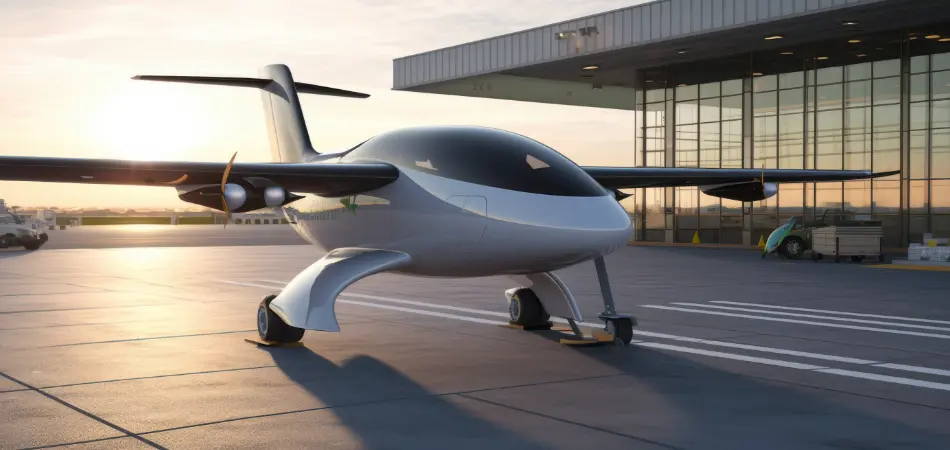The Electric Airplane: Coming to an Airport Near You?

As of 2024, 10 to 15 companies internationally are manufacturing electric and hybrid-electric aircraft.
These companies range from startups to aerospace giants, including well-known names like Airbus, Joby Aviation, Wright Electric, and ZeroAvia.
Why would they do this?
Today’s batteries are:
- Relatively bulky
- Relatively heavy
- Limited in range
- Slow to charge
However, rapid advancements in battery technology and renewable energy resources make electric airplanes a viable option in the near future, even for commercial travel.
Some experts predict that by 2040, electric aircraft could make up a third of all new planes in service.
Advantages of Electric Airplanes
- Reduced Carbon Emissions: Electric airplanes produce zero emissions during flight, giving them a much lower carbon footprint than conventional aircraft.
- Lower Operating Costs: Electric airplanes require less maintenance than traditional planes due to their simpler design and fewer moving parts.
- Quieter and More Comfortable: Electric motors produce less noise and vibration than jet engines, creating a more comfortable experience for passengers (and anyone who lives near an airport).
- Shorter Takeoff Distance: Electric airplanes can take off on shorter runways. They accelerate faster and use power more efficiently.
- Energy Efficiency: Electric airplanes waste less energy than traditional planes, making them more efficient and cost-effective in the long run.
- Local Air Quality: With zero emissions during operation, electric airplanes can significantly improve air quality around airports and urban areas.
Challenges for Electric Airplanes
- Battery Technology: The biggest hurdle for electric airplanes is finding a battery that can store enough energy to power a flight. Current batteries are heavy and have limited range, which makes them impractical for longer flights.
- Charging Infrastructure: Airports must have adequate charging infrastructure to make electric airplanes a viable option. This means investing in new technology to support electric aircraft.
- Regulatory Issues: As with any new technology, there will be regulatory challenges; the wheels of bureaucracy turn slowly.
- Cost: The price of developing electric aircraft can be high. Although operating costs will drop over time, initial investments and price barriers may slow adoption.
- Public Perception and Acceptance: Demonstrating the safety and reliability of electric aircraft must precede widespread acceptance among airlines and passengers.
New Developments in Battery Technology
Recent advancements in battery technology focus on enhancing energy storage, safety, and weight efficiency.
- Solid-state batteries promise higher energy densities and improved safety by replacing liquid electrolytes with solid materials. They’re less prone to overheating and offer a longer lifespan than lithium-ion batteries.
- Lithium-sulfur batteries offer a theoretical energy density significantly higher than lithium-ion batteries. Lithium-sulfur cells use sulfur’s high capacity for storing energy, potentially paving the way for lightweight and cost-effective solutions.
- Aluminum-ion batteries are being developed as a safer and less expensive alternative. Aluminum is abundant, allowing for cost-effective production, and these batteries promise quick charging and extended life cycles.
- Silicon anode batteries can store more lithium ions, leading to higher energy storage capabilities and improved performance.
- Organic batteries derive from sustainable sources, can reduce the ecological footprint, and offer a biodegradable solution. These batteries will be more environmentally friendly while maintaining efficiency.
- Graphene batteries are known for their exceptional conductivity and strength. Graphene allows for batteries with faster charging times, more extended use, and greater stability, promising significant advancements in battery technology.
Future of Electric Airplanes
Electric airplanes will become more efficient as battery technology improves, leading to lower operating costs and improved performance.
- Small airlines and regional carriers will be among the first adopters of electric aircraft, followed by larger commercial airlines as the technology matures.
- Electric vertical take-off and landing (eVTOL) aircraft are under development for urban air mobility services. These electric flying taxis could revolutionize transportation in cities.
- Electric planes for cargo transport could significantly reduce carbon emissions in the freight industry, which is responsible for a large portion of global emissions.
- Artificial intelligence and advanced navigation systems can optimize the performance and range of electric aircraft, making them even more efficient and reliable.
FAQs About Electric Airplanes
Q: How long until we see electric airplanes in commercial service?
Some experts believe electric planes could be in commercial service within the next decade, with more significant adoption predicted by 2040.
Q: Will electric airplanes replace traditional jet engines?
Possibly, but it will be gradual as battery technology improves and infrastructure is implemented to support these aircraft.
Q: What is the range of current electric airplanes?
Current electric airplanes serve short-haul routes, with ranges typically between 100 and 300 miles. However, advancements in battery technology are expected to extend these ranges significantly in the coming years.
Q: Are there any electric airplanes in operation today?
Yes, several electric aircraft prototypes and small commuter planes are operating or in the testing stages. These are used for short regional flights, pilot training, and experimental purposes.
Q: How do electric airplanes impact noise pollution?
Electric airplanes are notably quieter than their traditional counterparts due to the silent nature of electric motors. This noise reduction benefits passengers and residents near airports, making electric aviation a more harmonious fit in urban environments.
Q: What types of electric airplanes are being developed?
Small commuter planes, regional jets, all-electric eVTOL vehicles, and even unmanned aerial systems (UAS) for passenger and cargo use are under development. Each type serves different market needs.
1 Comment
Submit a Comment
More Articles

Try to write an update for March 2021